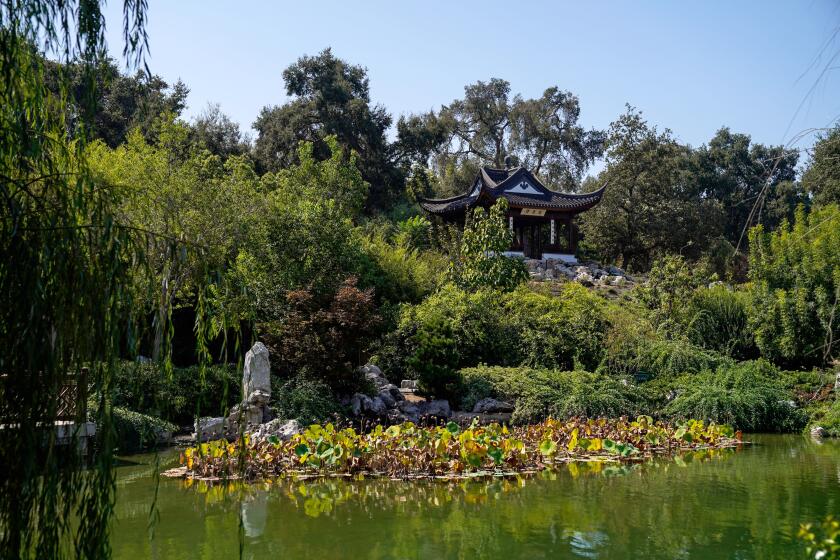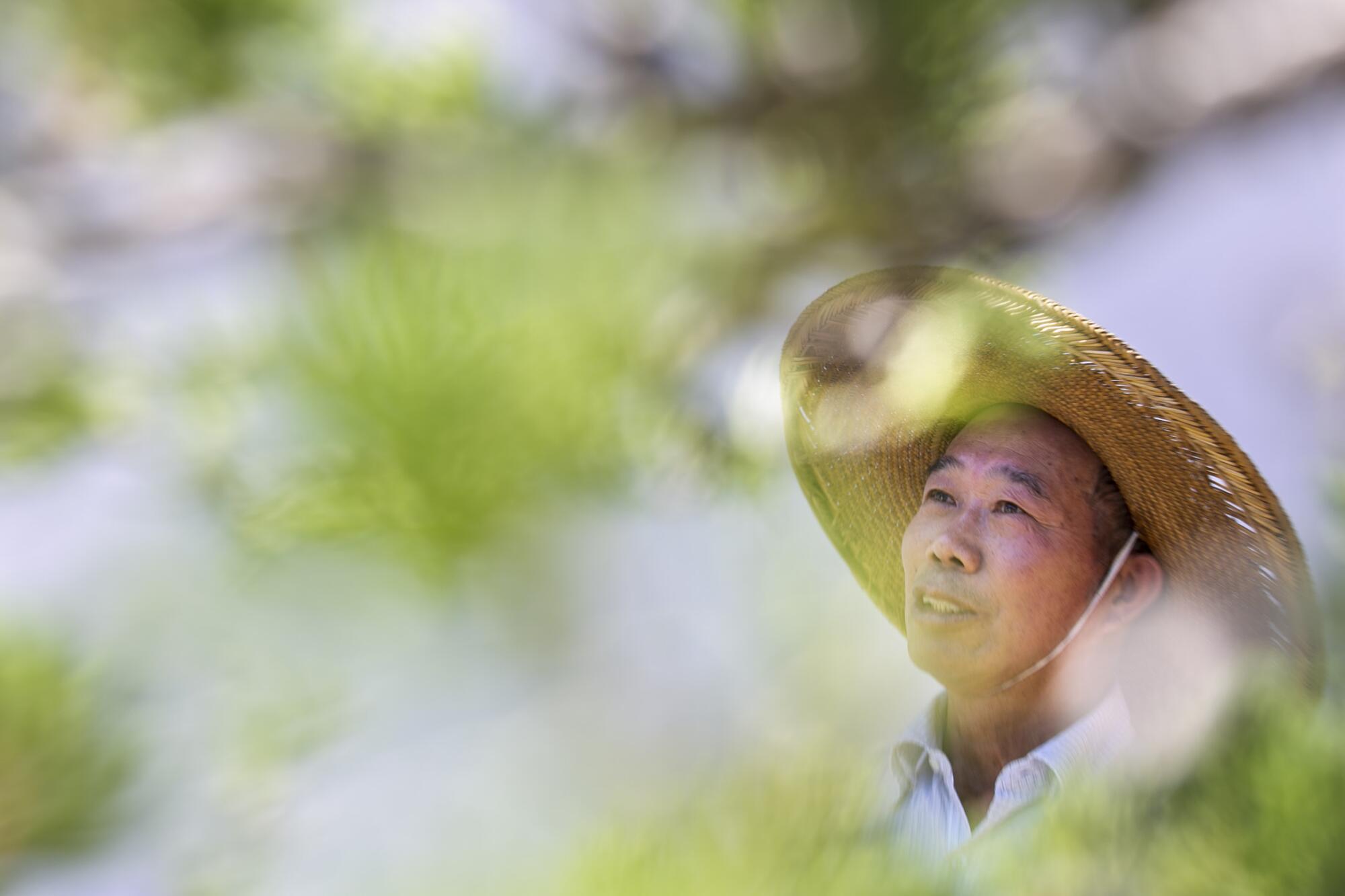
- Share via
Before he left China in 1986, Che Zhao Sheng’s shifu, or teacher, said to him, “After you go to the United States, share some of our Chinese culture with them if you have a chance.” The shifu was a penjing master, the man who taught Che the art of creating miniaturized trees and plants in pots, pruned and constricted over time to take the shape and spirit of their full-size siblings.
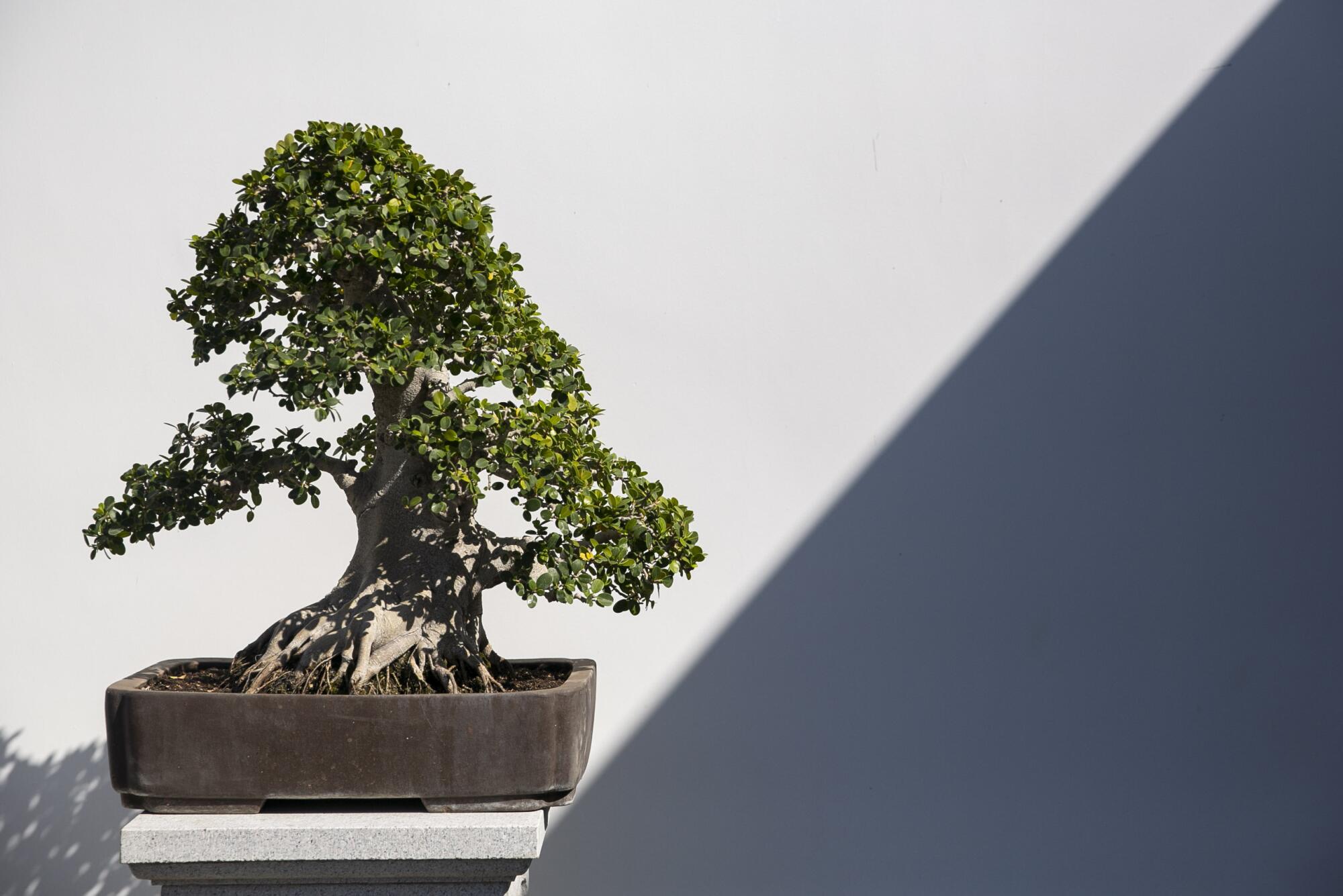
Today, more than three decades later, the student is fulfilling that legacy, and in a major way. Che is specialist gardener for the penjing court, the Verdant Microcosm, in the newly expanded Chinese Garden at the Huntington Library, Art Museum, and Botanical Gardens in San Marino.
A spry 69-year-old with a broad-brimmed straw hat and a water bottle tucked into the side of his workman’s pants, he is surveying the 21 penjing brought from his home garden, plants that have been unloaded in a cluster on the ground. He points out the varieties — Chinese elm, olive, ficus — then suggests we go look at one of his favorites down the hill.
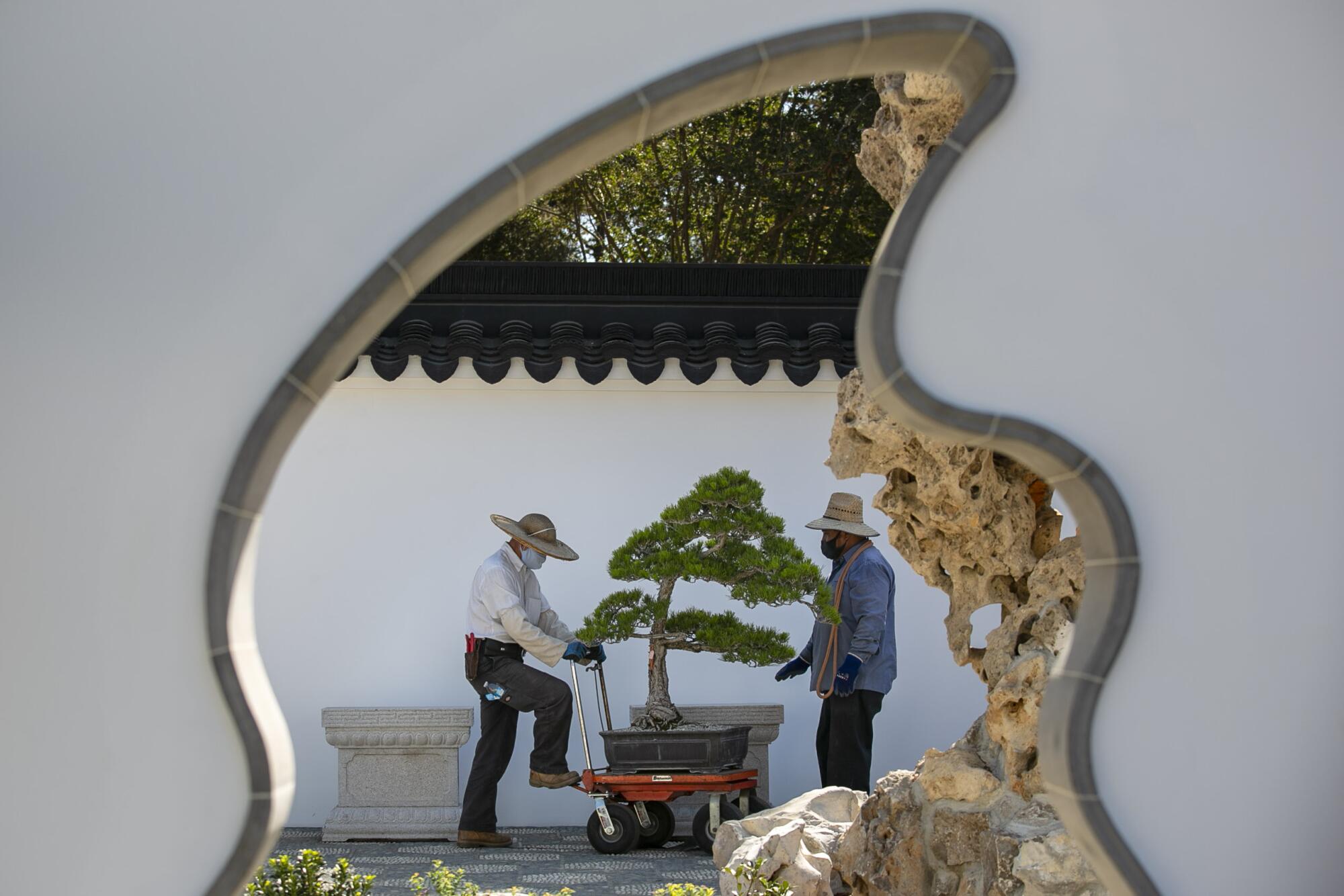
The court is composed of winding paths, whitewashed walls and occasional pieces of gnarled Taihu rock imported from Lake Tai in China. We pause before a twisting juniper tree a few feet high, positioned on a stone pedestal, dramatic against a creamy wall. Its elegant, broad canopy flows from a weathered trunk. Che is anxious to finish installing the other penjing in time for previews, so we head back up the hill. It looks like the other gardeners are on break, so we continue our interview in the shade of the pavilion that overlooks the landscape.
Born in Guangzhou, China, Che started studying penjing when he was 26. He practiced with Lu Zhi Quan, the son of noted master Lu Xue Ming, in Guangzhou, and later became a student of Master Lu himself. In 1986, Che immigrated to the United States, eventually settling in San Gabriel.
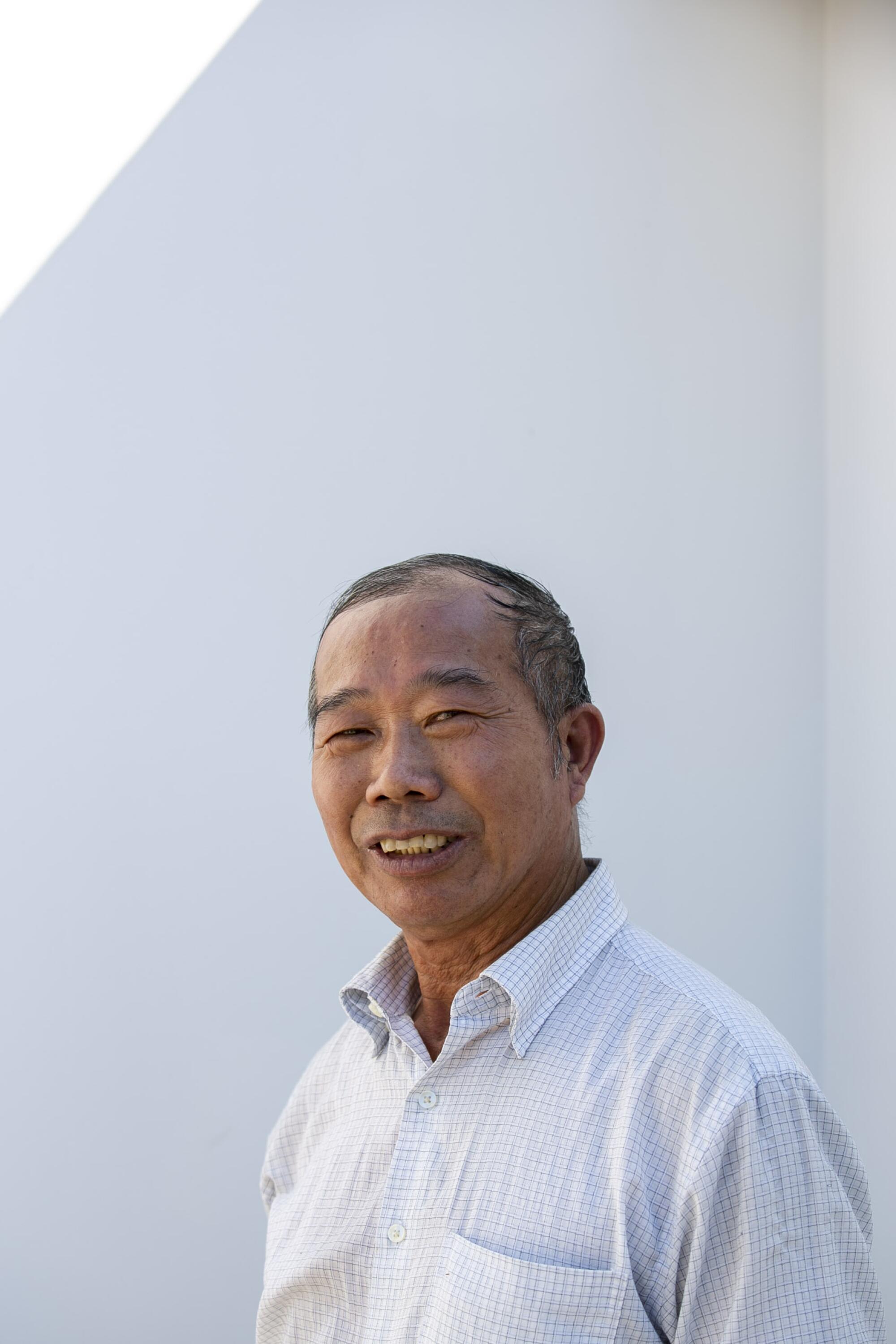
“When you first arrive as a Chinese [immigrant], you’re penniless,” he says in Chinese. “You have to be willing to do all kinds of work.” He’s taken jobs in restaurants, he’s worked as a residential gardener. He started as a volunteer at the Huntington, helping to develop and to tend to a small collection of black pine penjing.
“When we began building the Chinese Garden,” says Jim Folsom, director of the Botanical Gardens at the Huntington, “we were looking for someone who knew penjing — so it was a bit of luck we knew already Mr. Che. He’s the first technical specialist gardener we hired for the Chinese Garden.”
That was more than a decade ago, and today, Che both cultivates penjing and tends to the ones in the Huntington’s collection. When the Chinese Garden reopens Friday, about 30 will dot the court. Ultimately, says Phillip Bloom, curator of the Chinese Garden, about twice that number will be on display. At least half will have been cultivated by Che.

Americans may be more familiar with bonsai, the Japanese version of penjing. Bonsai was popularized after World War II by Americans returning from the U.S. occupation of Japan. Bonsai came to Japan from China around 1200, by some accounts, and over time it developed differences in aesthetics and techniques.
“So usually bonsai focus on individual specimens,” Bloom says, “whereas a penjing typically will involve multiple plants that have a landscape-like setting with rocks and maybe water.” (“Penjing” literally translates as “potted landscape.”) However, the rule is not absolute — many of Che’s penjing feature one tree — and the differences may be more regional, according to certain schools, says Bloom, than by nationality.
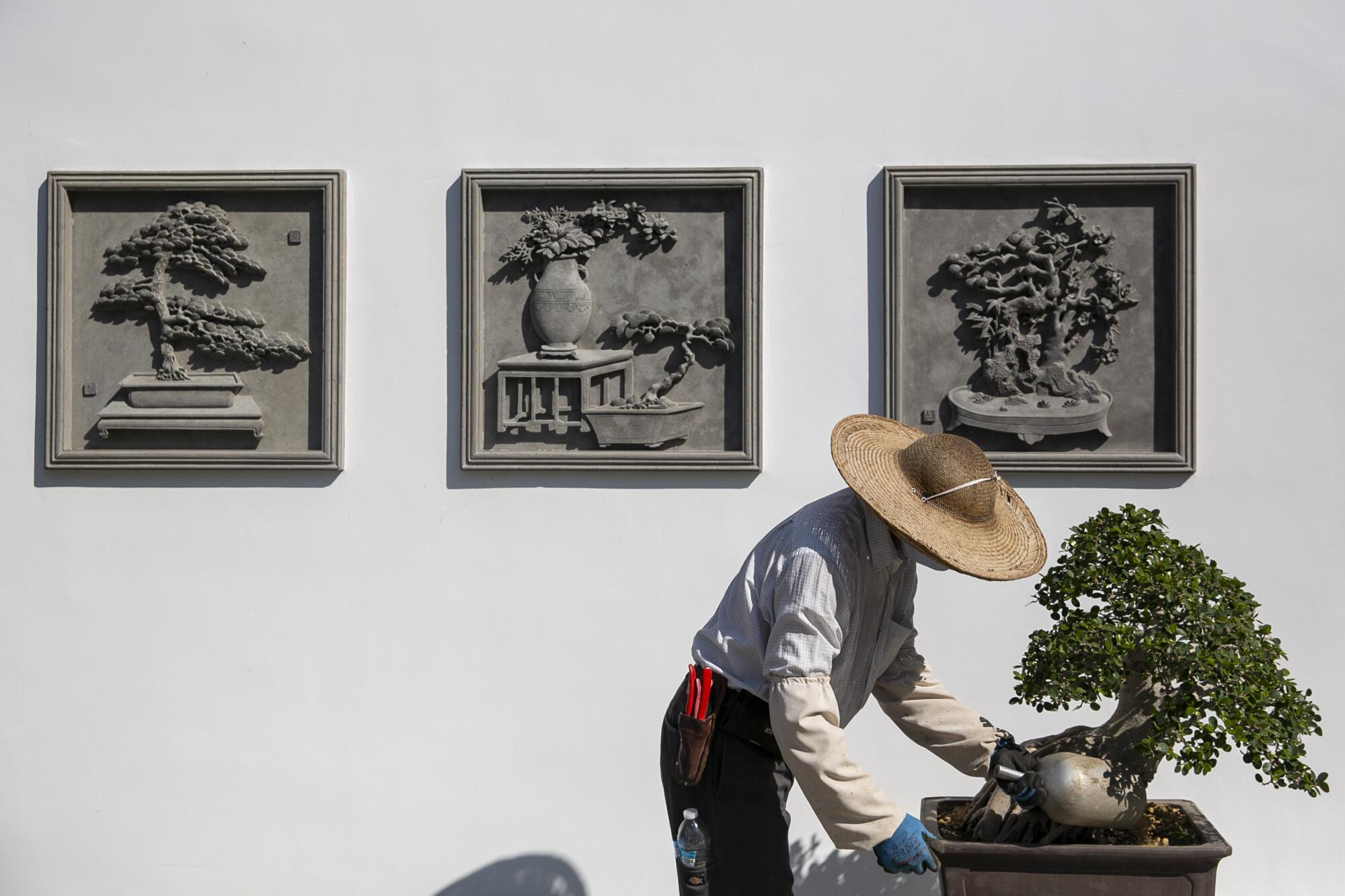
The final phase of the Huntington’s famed Chinese Garden is scheduled to open Oct. 9, with an additional 11.5 acres, or 15 acres total with new pavilions, landscaping and — someday — even restaurants.
Some bonsai and penjing use wire to train the plants into desired shapes. Che does not. Beginning with a taproot or sometimes a plant started by another gardener, Che studies the shape of the tree, lets it grow to the desired diameter, then makes what he calls “the first cut.” He cuts off the mini-trunk at that strategic point and lets it grow from there, in a method called “clip and grow.”
In a few years, he makes a second cut, and perhaps later a third cut, to get the ideal shape — one that should look natural. The pot or tray is changed as the plant grows, although the container is kept small and relatively shallow to restrict the growth of the roots.
“Penjing takes time, a lot of time,” he says. “It can take 20, 30 years, like raising a child.”
Several times during our conversation Che refers to his penjing as children. Which makes one wonder, having spent so much time and dedication to their upbringing, how can he bear to let them go? The ones he has brought over today will remain part of the Huntington’s collection, with more to come. He pauses a moment. “I’m happy to let them go out into the world,” he says, “where other people can appreciate them.”
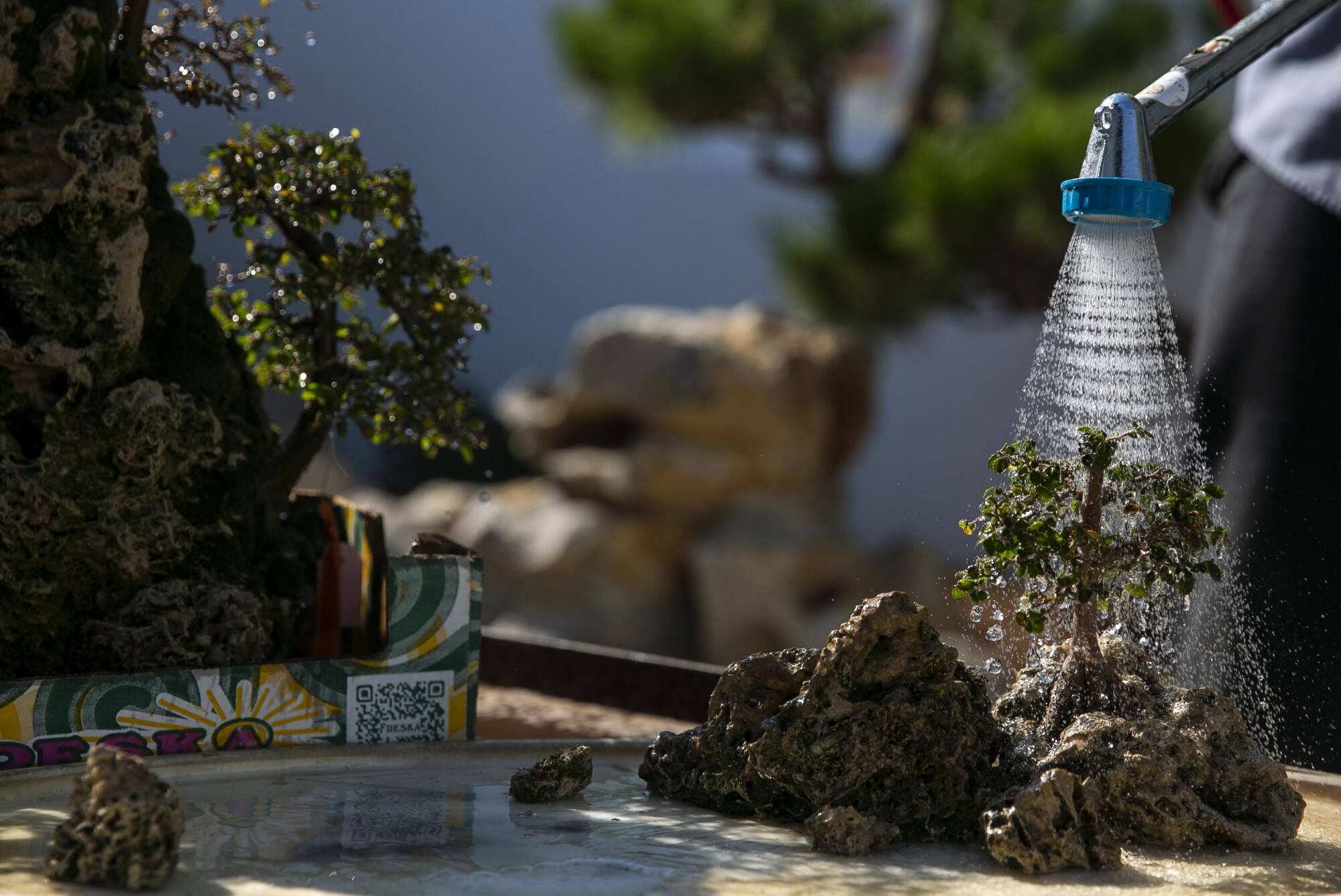
An expanded Chinese Garden
Where: The Huntington Library, Art Museum, and Botanical Gardens, 1151 Oxford Road, San Marino
When: Expansion opens Friday. Gardens remain open Wednesdays-Mondays with COVID-19 protocols in place, including mask requirements and physical distancing.
Price: $13-$29; children younger than 4 are free. All visitors must reserve tickets online in advance; credit or debit cards only, no cash
Info: (626) 405-2100, www.huntington.org
More to Read
The biggest entertainment stories
Get our big stories about Hollywood, film, television, music, arts, culture and more right in your inbox as soon as they publish.
You may occasionally receive promotional content from the Los Angeles Times.
